- Home
- slideshows
- miscellaneous
- AT&T has quietly bolstered its ad tech to compete with Google. Here's the pitch deck it's showing to agencies to explain how it works.
AT&T has quietly bolstered its ad tech to compete with Google. Here's the pitch deck it's showing to agencies to explain how it works.
Xandr is one of AT&T's four divisions.

Xandr's data cuts across AT&T's content, mobile subscribers, and pay-TV services.
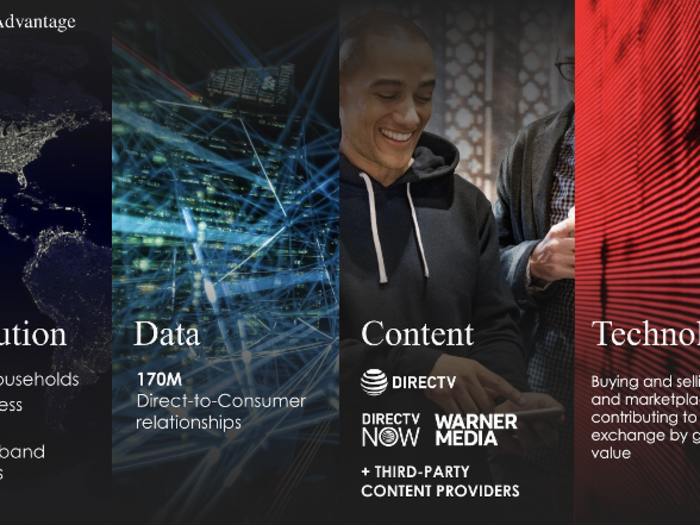
Xandr's pitch to advertisers is that it combines AT&T's data for advertisers. This slide shows the four buckets of data and the reach of each one.
Advertisers struggle to measure consumers' shift to streaming and digital video.
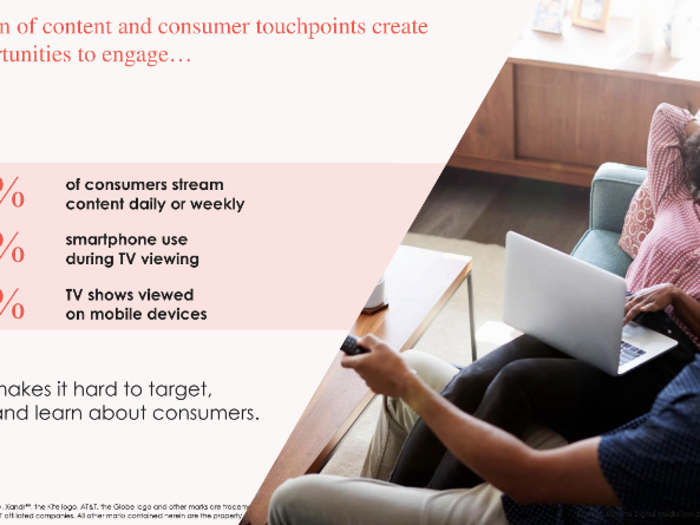
Research on this slide shows how it's getting harder for advertisers to keep up with consumers as they shift from watching TV to watching video on mobile devices and connected TVs.
Marketers want proof that their ads are working.
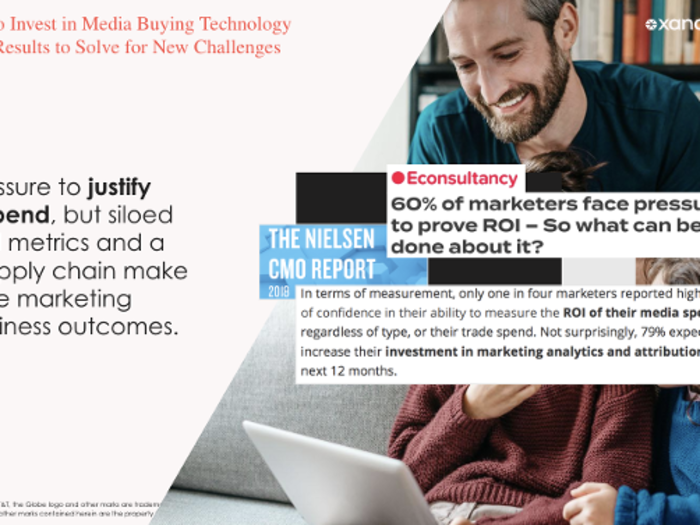
AT&T is pitching its data and measurement tools as a solution to advertisers' measurement challenges — specifically with attribution metrics that track if someone purchased something after seeing an ad.
Xandr is pitching its data and brand-safe content.
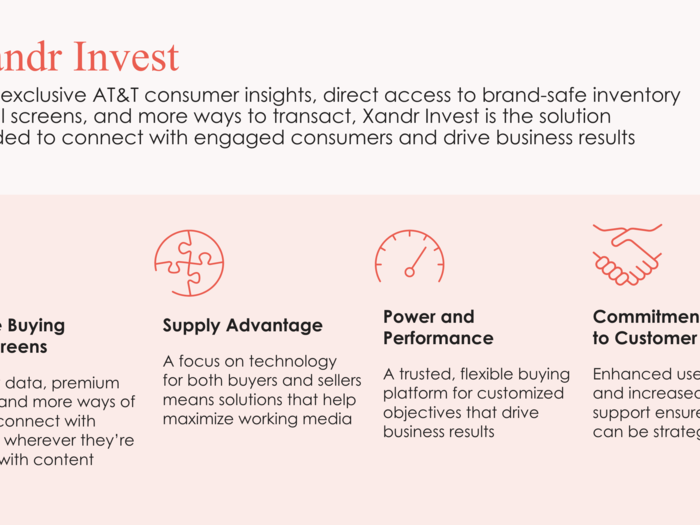
This slide shows how advertisers can use AT&T's data to create audiences for ad targeting across premium, brand-safe properties. It also notes that Xandr works with both advertisers and publishers.
AT&T has troves of first-party data.
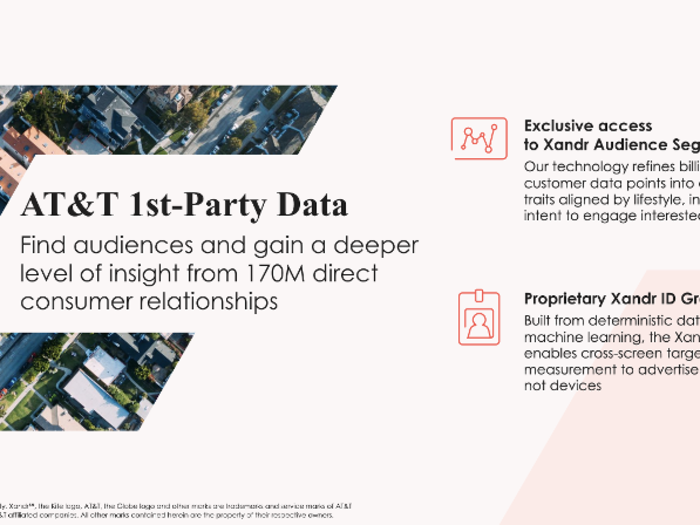
AT&T has 170 million pieces of first-party data for video that comes from wireless subscribers, pay-TV services, and visitors to properties like CNN and Bleacher Report, CEO Randall Stephenson said last year at Goldman Sachs' Communacopia Conference.
This slide gives further detail on the data. For example, Xandr's identity graph can target consumers across multiple devices.
Xandr's reach extends beyond AT&T's properties.
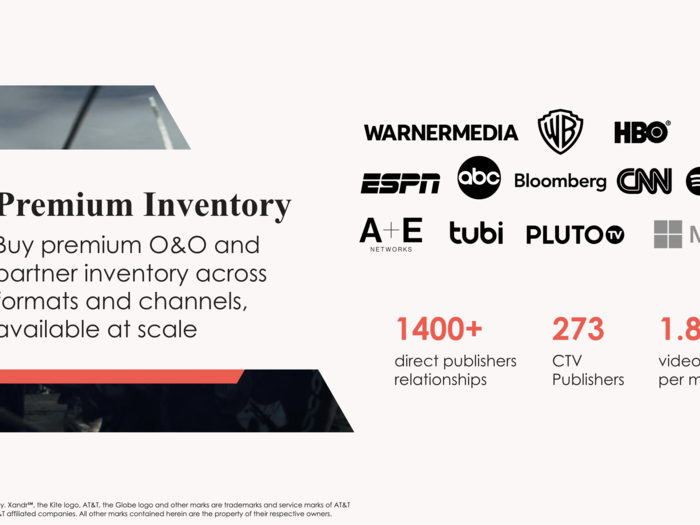
In addition to its own properties like Turner and HBO, Xandr also works with 1,400 publishers and 273 connected-TV publishers.
Xandr is targeting big buyers.
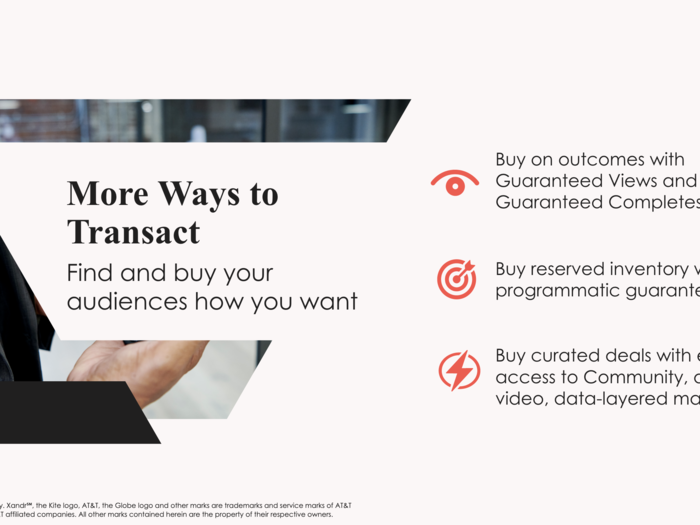
A slide shows how Xandr packages some of its larger deals.
One package offers advertisers the ability to pay for reserved packages where marketers pay a fixed price ahead of running programmatic campaigns, meaning that advertisers don't bid on prices through an auction but they do buy ads through a programmatic platform.
Another package guarantees advertisers that a certain amount of their spend will include video ads that were watched until completion and met viewability standards.
Big advertisers like holding companies tend to be most interested in these sorts of media buys.
Xandr says its ad-tech gives it an advantage over others.

Xandr says that it offers "straightforward, competitive pricing" to publishers' content.
Xandr plays in multiple areas of ad-tech.
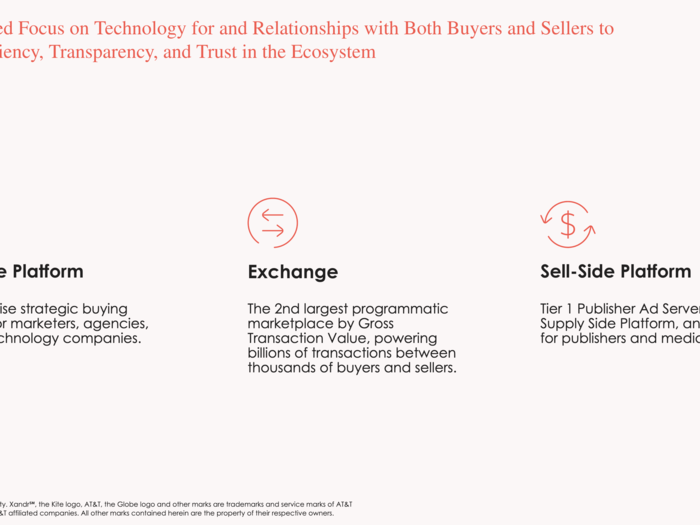
Xandr has both a demand-side platform (DSP) that helps advertisers buy ads programmatically and a supply-side platform (SSP) that publishers use to sell ads. It also powers an ad exchange that allows advertisers to buy campaigns from multiple ad networks.
Before AT&T's acquisition, AppNexus was most known for its supply-side platform and has built out the advertiser-focused arm more under AT&T's ownership.
Google is Xandr's biggest competitor.
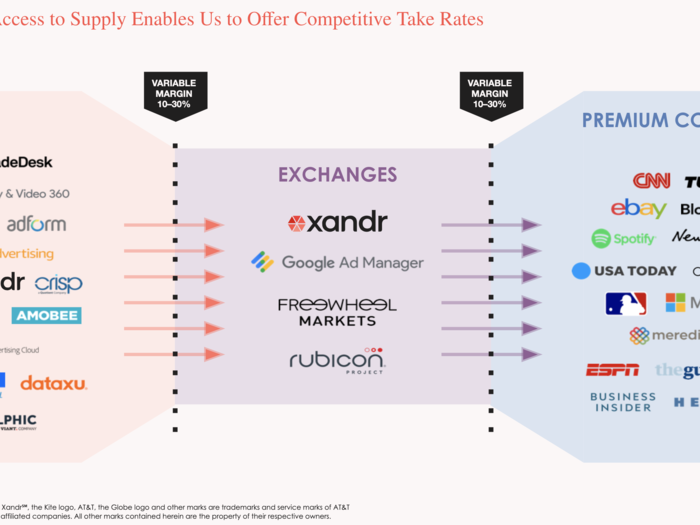
This Luma Partners'-esque chart shows how Google is Xandr's biggest competitor in ad-tech.
Google and Xandr are the only companies that provide software for both advertisers and publishers, and the chart suggests that Xandr wants to compete directly with Google.
Xandr says its ad-tech fees are competitive.
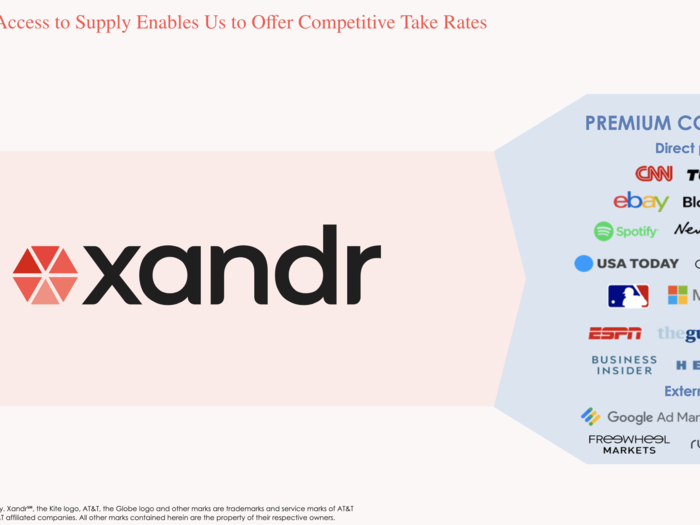
Xandr says that its fees — or take rates — are competitive with other ad-tech companies because it has direct access to content from its publishers and other media companies.
Xandr's move to build out its DSP keeps it competitive, too. Similar to Google, Xandr works with both publishers and advertisers and is reflected in its pitch to advertisers.
Take rates are fees that ad-tech companies charge for providing their technology and are a percentage of an advertiser's spending.
Xandr's transparency predates its AT&T ownership. Before AT&T's acquisition, AppNexus has long worked on keeping take rates low and competitive with firms like Rubicon Project.
Xandr works with industry players to stamp out fraud.
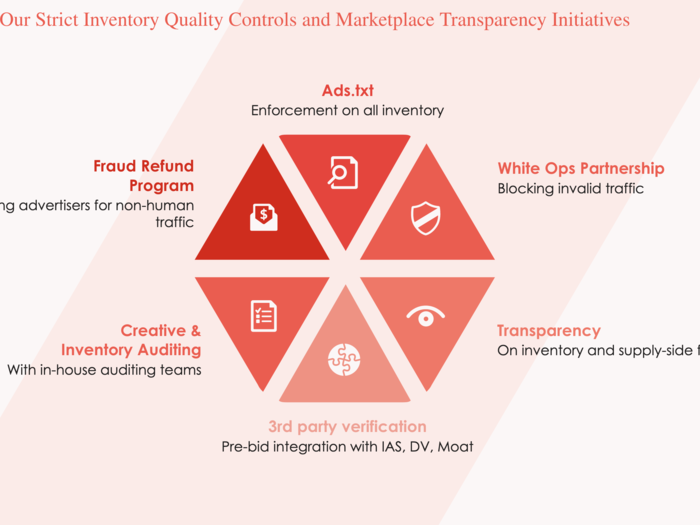
A slide shows how Xandr works with third parties like the Interactive Advertising Bureau and Integral Ad Science to stamp out ad fraud and be transparent about fees.
Xandr is pitching a machine-learning tool.
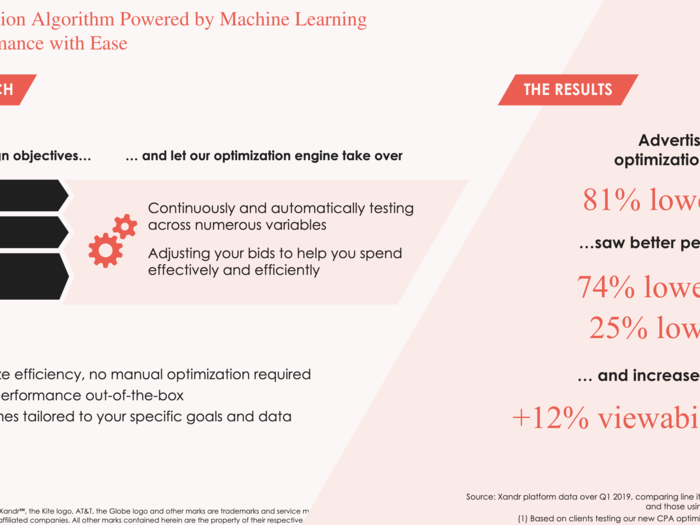
Xandr is encouraging clients to use its technology to figure out which audiences and publishers they should use to meet their campaign goals.
According to Xandr, advertisers that have tested its optimization tool have lowered their CPM (or cost per 1,000 impressions) by 81%.
Xandr is encouraging advertisers to use their first-party data.
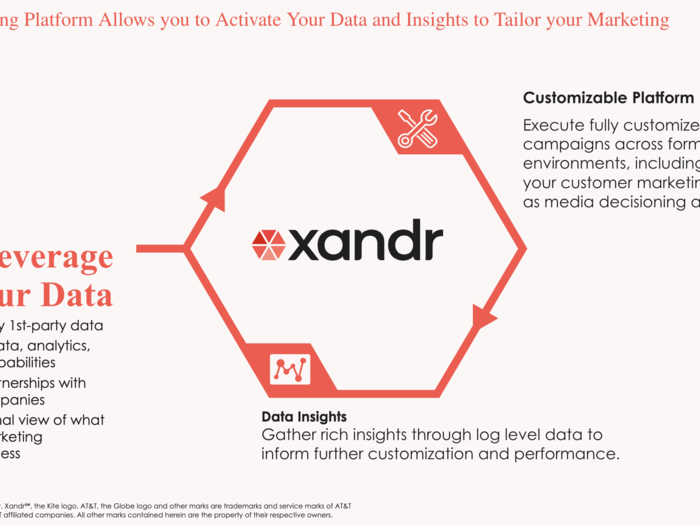
With privacy and regulation like the California Consumer Privacy Law looming over the advertising industry, marketers are increasingly switching from third-party data collected by tech firms to their own first-party data collected from email, loyalty, and e-commerce programs.
Xandr's pitch deck encourages advertisers to upload their first-party data to its platform. In return, advertisers can get log-level data that Xandr says can measure campaign performance.
Xandr's platform includes new tools for buyers.
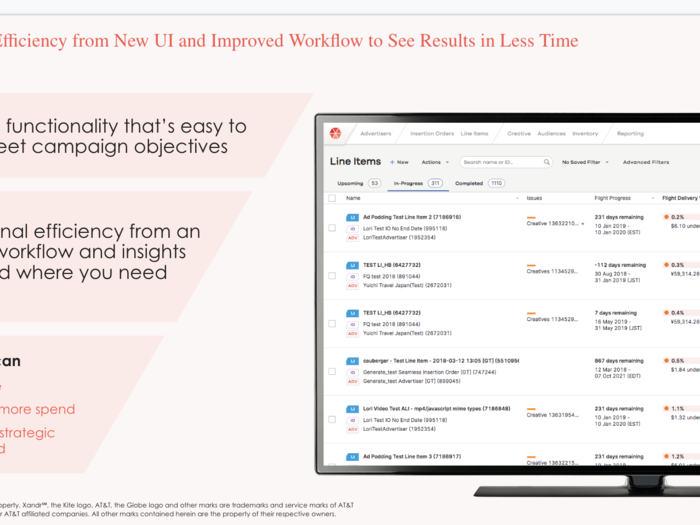
To appeal to advertisers, Xandr has redesigned its platform to allow buyers to track campaigns in real-time.
Popular Right Now
Popular Keywords
Advertisement